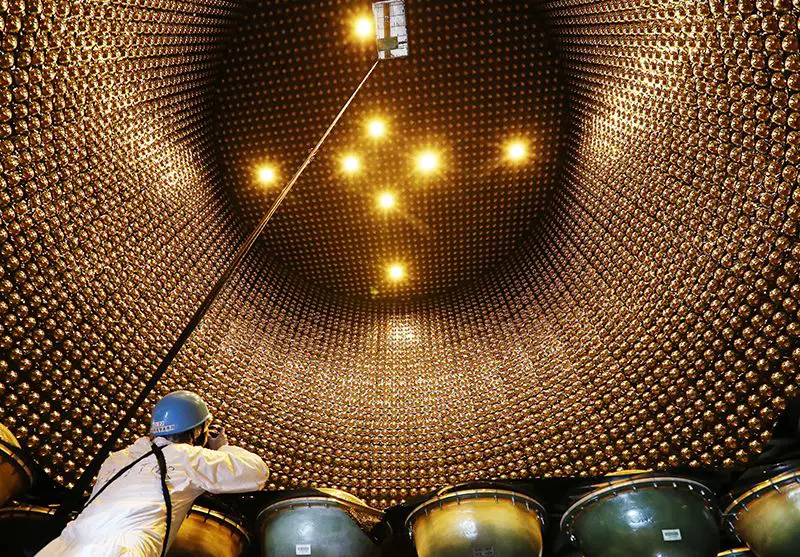

But don’t they pick up other signals in error? No, because of Super-K’s location, the only particles that pass through are neutrinos (due to their extremely low mass and zero electric charge). There are around 13,000 of them altogether. Right then! How are the subatomic particles known as neutrinos detected? Through the PMTs that line this giant tank, and others installed outside. It’s difficult to make any sort of gesture I’m scared of falling, or dropping one of the seven cameras jiggling around my neck. I’m propelled into the centre of the detector. I sit down gingerly and push off from the platform. The air is invigorating, the water dances like silk in the wind.Īn inflatable dinghy offers up a paddle as it bumps against the platform. Looking around, I’m in an alternative universe with thousands of stars twinkling in an absolute calm. As the water is ultra-pure, anybody stupid enough to fall in will be exfoliated at best, dissolved at worst. Unless it’s me that’s completely disoriented. I edge forward, trying to come to terms with the physical laws of such an otherworldly place. The pod alights on a highly unstable floating platform. Try to hold back a rush of exhilarated tears … Is this a lucid dream? Press the down button, the pod rattles a few seconds and then descends rapidly. Looking down, I realize that the vast tank of the detector is just below. This is the entrance to Super-K! Listening hard, I hear only the wind and the soft hum of electric generators. Just as I’m beginning to wonder if disaster is looming, a light appears in the distance. I’ve visited the abandoned parts of the mine in the past, as documented here: Kamioka Mine.

The giant Super-K chamber was constructed one kilometre underground, using the former network of tunnels at the Kamioka mine. The air is fresh there’s no sign of life. Parking the car on a narrow track, I pick out a safety helmet from a little shed and head down the tunnel. The site is totally unmarked, but the number of warning signs and safety instructions at the entrance reveal its underground hideout. The tunnel entrance is near here, deep in the mountain. Apart from a welcome sign announcing Super-Kamiokande, this is a completely ordinary-looking stretch of rural Japan. I’m in the village where the mine entrance is. They get around in little boats to clean and repair, even changing the photomultiplier tubes (PMTs) that line the walls. As its 40-metre high stainless-steel tank is normally filled with 50,000 tonnes of purified water, a team of workers slowly drains the tank, lowering the water level landing by landing. The detector is cleaned once every ten years or so. I’ll take you there? OK, let’s explore Super-Kamiokande! They all show a very low dark counts and good collection efficiency, which makes them excellent choice to be used in the experiment.In fact, you won’t believe your eyes. Several 3" PMT candidates considered for the Hyper-Kamiokande OD have been characterized for this study. They would give better redundancy, spatial, and angular resolution, as there would be twice or three times more photosensors that the original 8" design proposal of the experiment, and for a reduced cost. An innovative new setup using small 3" PMTs is being proposed for the Hyper-Kamiokande OD. Any optimization would lead to a significant improvement for the physics goals of the experiment, which are the measurement of the CP leptonic phase and the determination of the neutrino mass hierarchy. An Outer Detector (OD) consisting of PMTs mounted behind the inner detector PMTs and facing outwards to view the outer shell of the cylindrical tank, would provide topological information to identify interactions originating from particles outside the inner detector. It will also be a detector capable of observing - far beyond the sensitivity of the Super-Kamiokande detector - proton decay, atmospheric neutrinos, and neutrinos from astronomical sources. It will serve as a far detector, 295~km away, of a long baseline neutrino experiment for the upgraded J-PARC beam in Japan.

Hyper-Kamiokande, scheduled to begin construction as soon as 2020, is a next generation underground water Cherenkov detector, based on the highly successful Super-Kamiokande experiment.


 0 kommentar(er)
0 kommentar(er)
